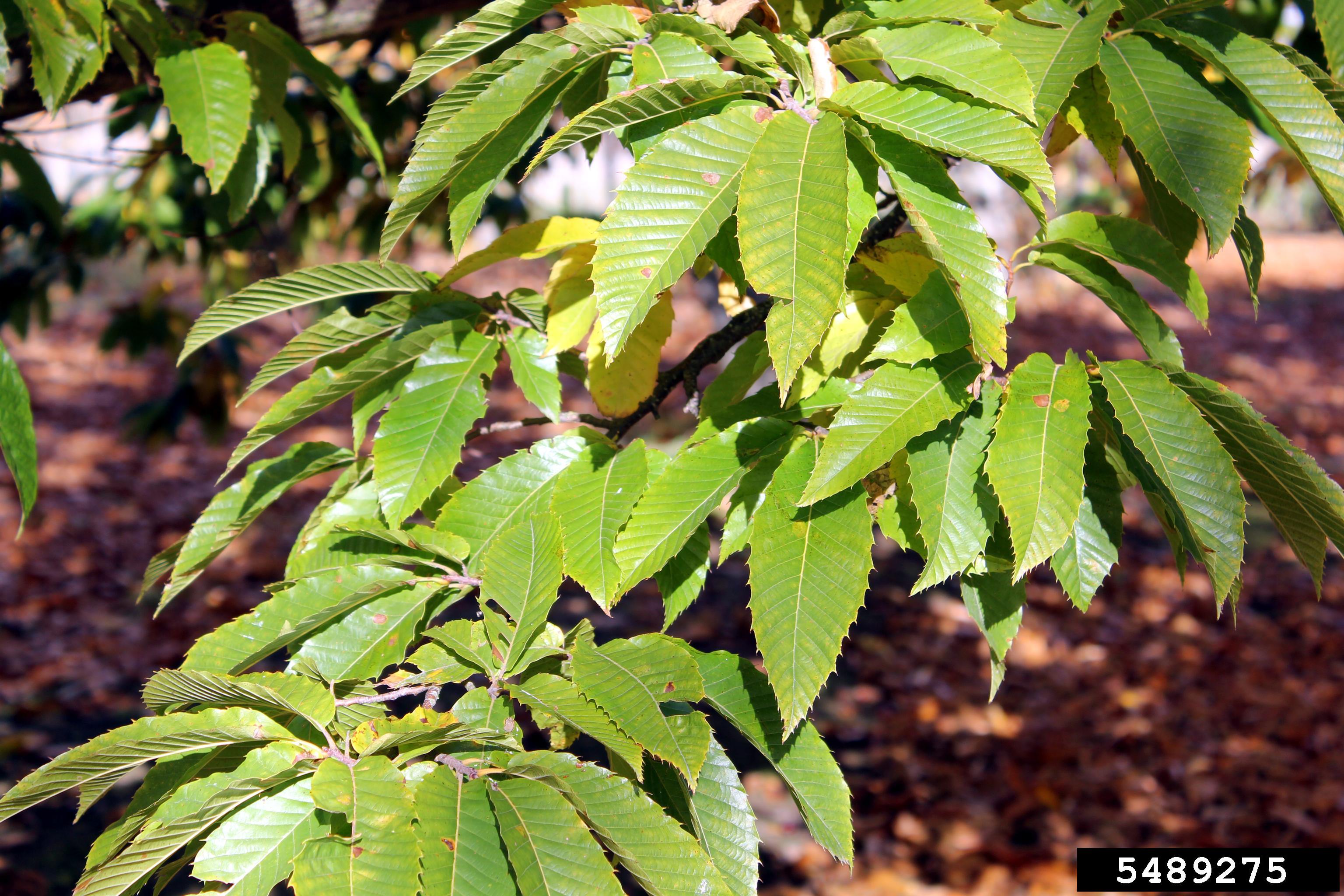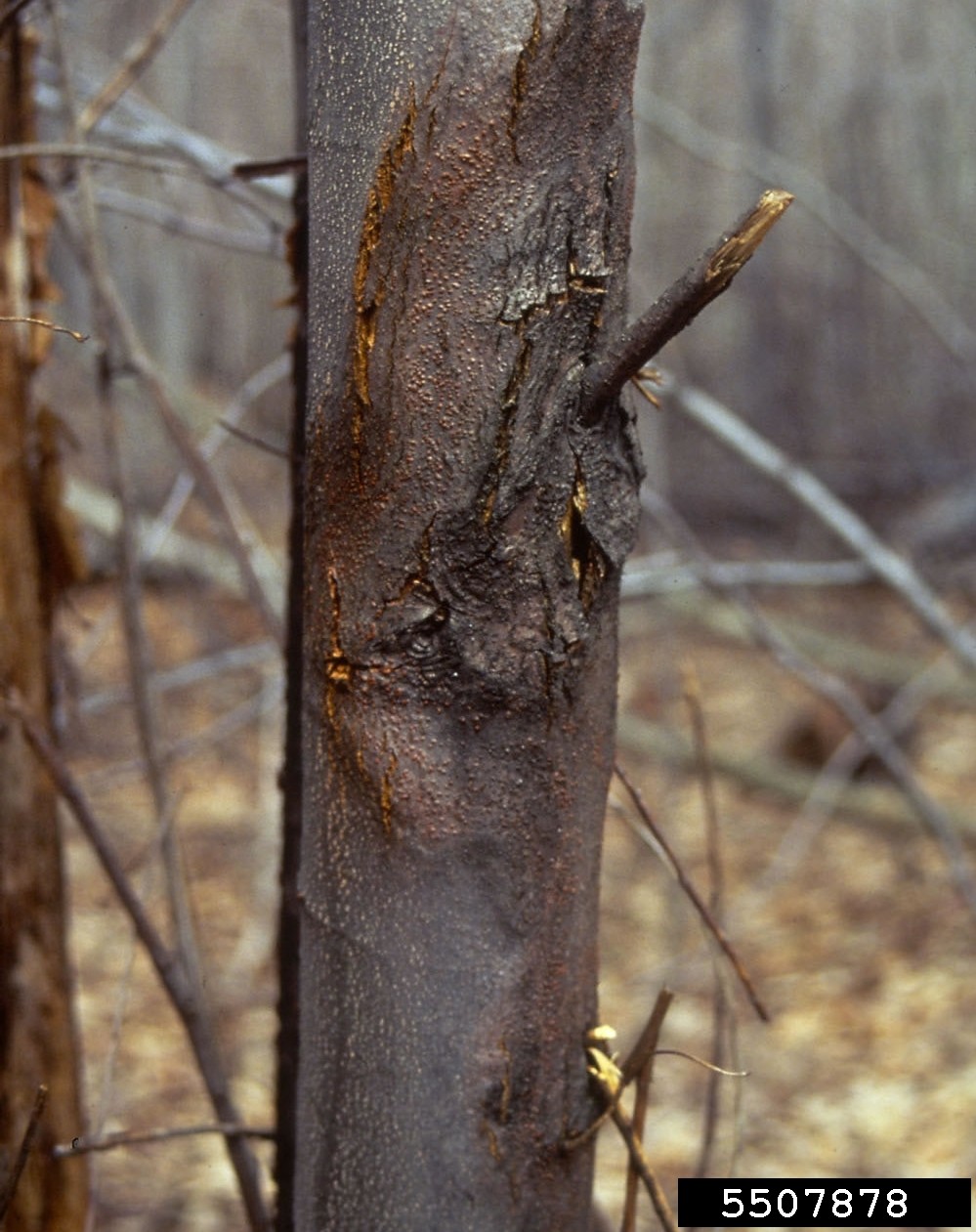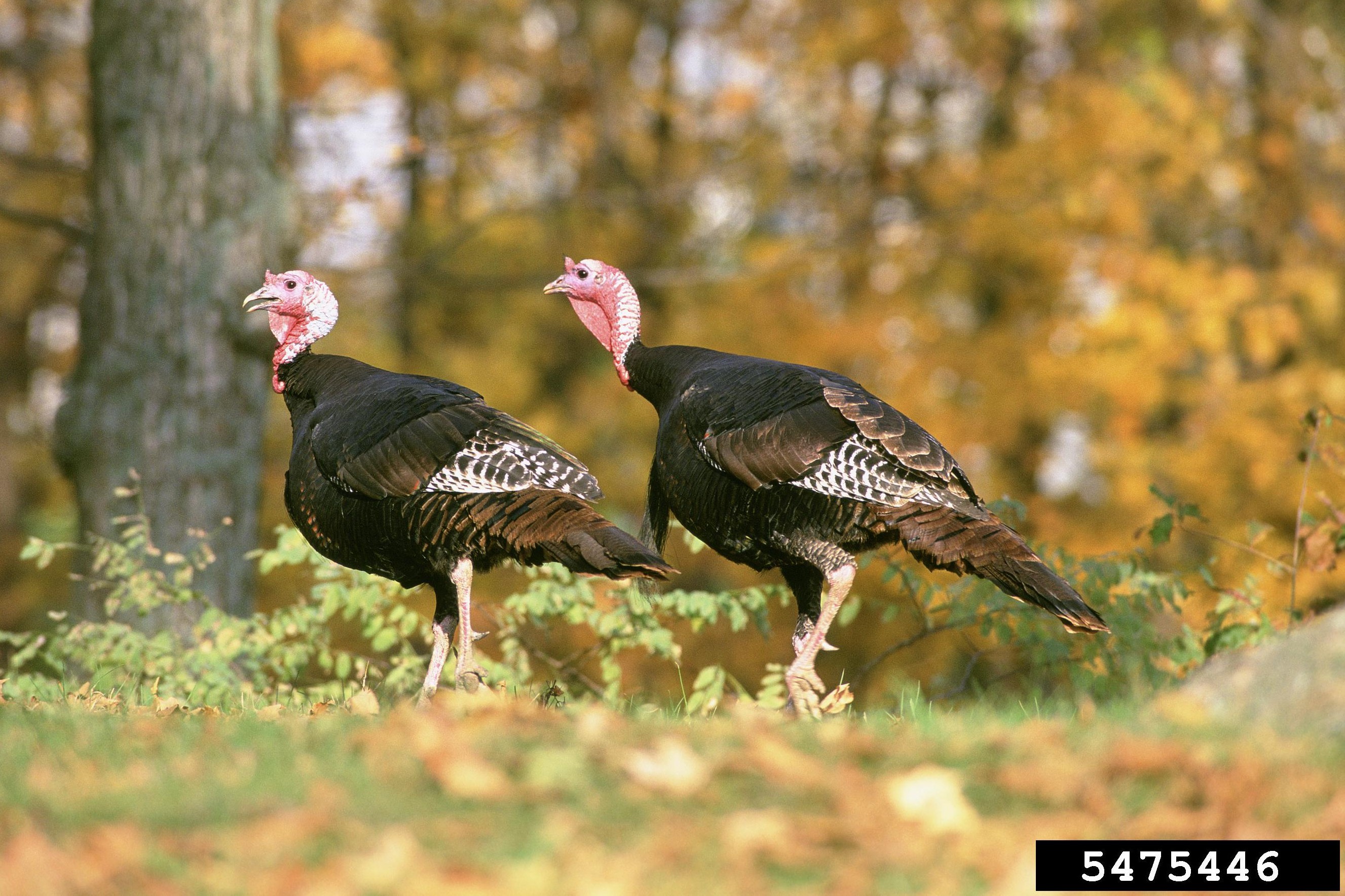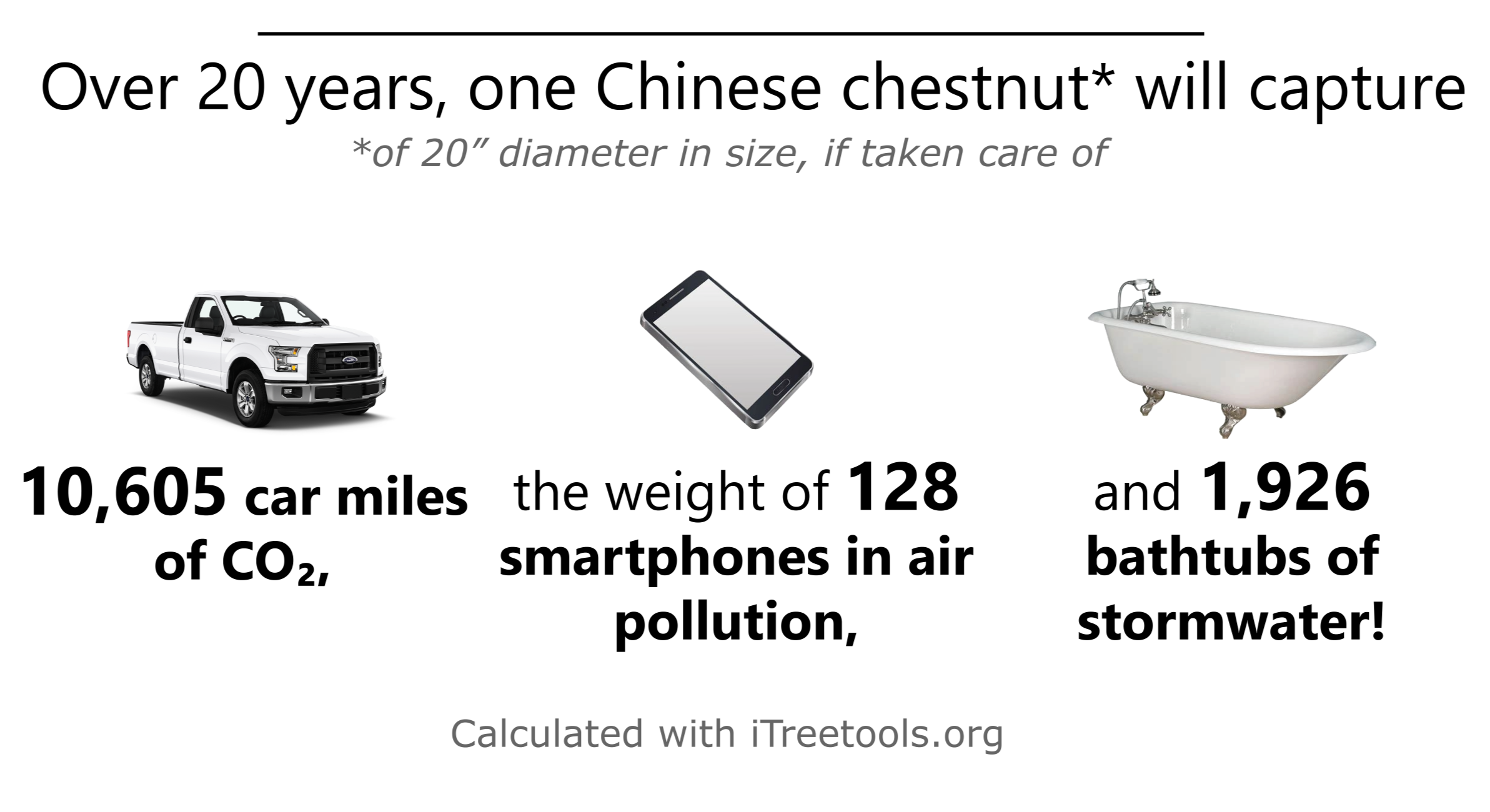Tree Highlight: Chinese chesnut
Chinese chestnut
Castanea mollissima (Family Fagaceae)
Foliage of the Chinese chestnut tree
The basics
The Chinese chestnut (Castanea mollissima) is native to Asia and is widely planted in backyards, streets, gardens and parks throughout the eastern U.S., thanks to its beautiful foliage. The Chinese chestnut can grow up to 60 feet tall and has simple, 4-8-inch-long leaves with toothed margins. Fruits are spiny husks that measure 2–3-inch round containing 2-3 glossy brown, edible nuts which drop to the ground in autumn.
Did you know?
- The Chinese chestnut is widely cultivated because of its resistance to the chestnut blight, a lethal fungus that spread to North America during the 20th century and brought native American chestnuts close to extinction. Learn more about American chestnut and chestnut blight here.
- It may be easy to confuse Chinese chestnut with American chestnut. Chinese chestnuts have thick, oval-shaped leaves, with rounded leaf bases and small teeth along the margins, while American chestnuts leaves are thin, elongate, with a tapered leaf base, and with prominent teeth with a bristle at the end (see here how to tell them apart).
The Chinese chestnut tree is resistant to the chestnut blight, a fungus causing lethal cankers on the American chestnut tree (shown in the photo)
Many animals, including wild turkey, eat the nuts of the Chinese chestnut tree
Wildlife
- Wildlife love chestnuts, including deer, turkey, bear, raccoons, squirrels, and chipmunks.
- Many insects utilize chestnuts for protection and reproduction, including moths and weevils.
Uses
- Chestnuts are sweet, delicious, and considered a delicacy all over the world; they can be cooked in many ways to be eaten plain or to make bread, cakes, and more.
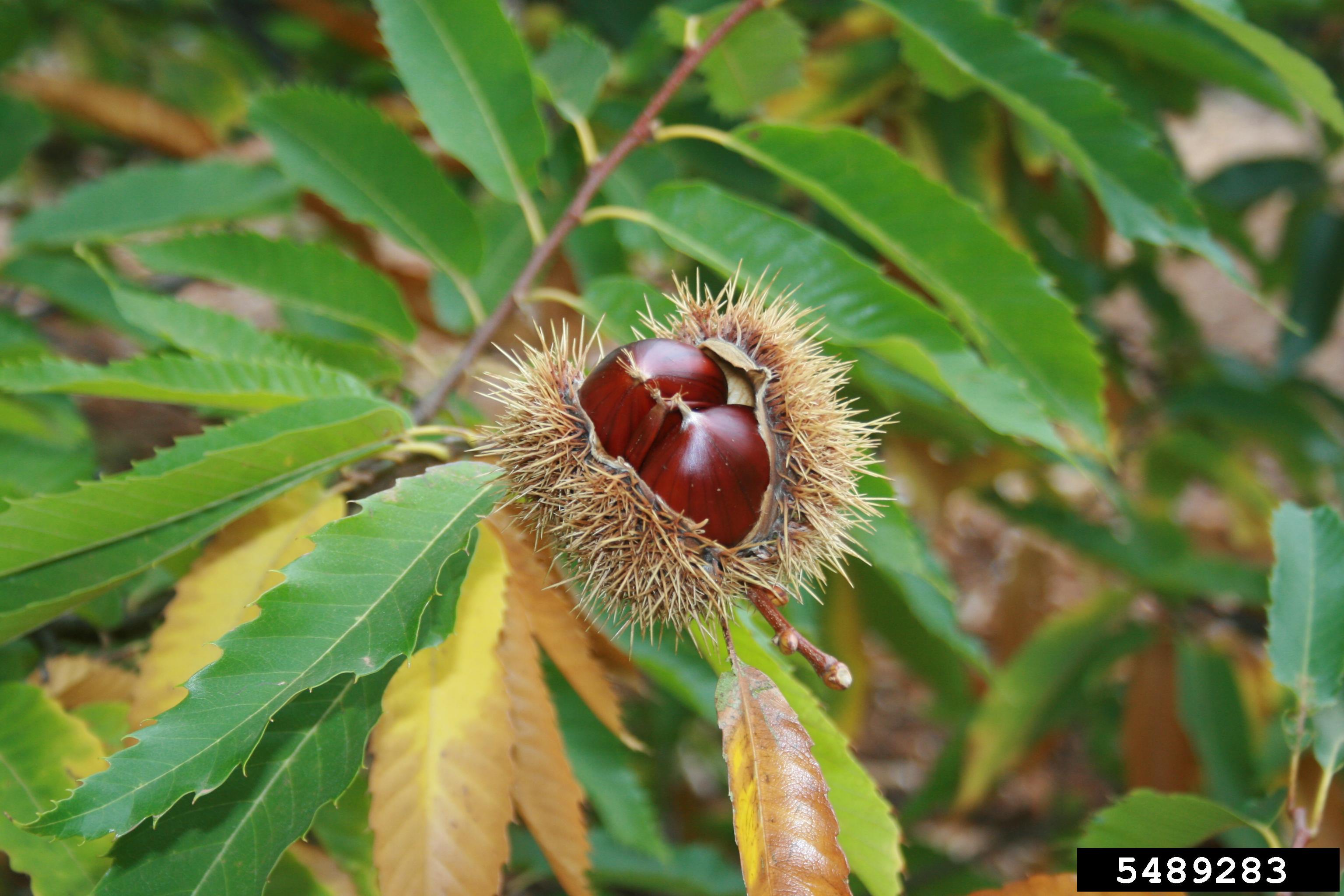
The edible nuts of the Chines chestnut are contained in spiny husks that open when the fruits are ripe
Benefits
- Over a 20-year period, a healthy American beech with a diameter of 20 inches will offset 10,605 car miles worth of CO2, absorb enough stormwater to fill 1,926 bathtubs, and remove an amount of pollution from the air – in gaseous and particulate form – equivalent in weight to 128 smartphones! Learn more at: https://mytree.itreetools.org/
Contact us: ufi@uky.edu
Images sourced from forestyimages.org
